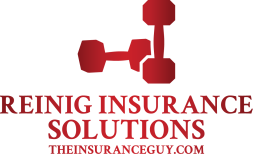As we enter into 2009, there are still two things that remain constant in our industry. 1) People get hurt in health clubs and 2) attorneys love when that happens. Despite all of the latest and safest technology in everything from equipment design to improved flooring materials, health club members still seem to figure out a way to injure themselves in health clubs. Nearly half of all claims we receive can be attributed to what we categorize as “member malfunction”. In other words, a member has caused an injury to themselves with no negligence on the part of the club. Despite this absence of negligence, the trial lawyers and their injured client often ignore this little fact and will sue you anyway. God bless America.
Since it is inevitable that people will continue to hurt themselves and since the trial lawyers still need to find clients, I think that this would be a good time to take some steps to try and eliminate or at least reduce the probability of getting sued in 2008.
Here are Six Steps to Avoid Claims and Save Money on Your Insurance:
- Make safety and risk management a part of your club’s internal operations. As part of a regular staff meeting, club owners should also discuss risk management issues. Some sample topics of discussion would be; equipment maintenance, problem wet areas, and child care procedures.
- Use a separate waiver document. The problem with most waivers is that they are buried within all of the other wording in a membership agreement form. Some waivers are even printed on the back of an agreement or are written so poorly that they wouldn’t hold up no matter how conspicuous it looks. By having a separate Waiver & Release Form for members to sign, the club can demonstrate that they have warned their clients of the possible dangers of working out and that the client has clearly agreed not to sue the club if they get hurt.
- Go above and beyond the call of duty to make sure that if a member is injured at your club, that you (the owner), personally follow up with that individual to make sure they are O.K. Offer to freeze their membership, send flowers, offer a free personal training session, or extend their agreement by two months…you should do whatever it takes (within reason) to make them happy. Offering to pay for their deductible or medical co-pay does not create any admission of guilt. Be sure to document every conversation, act of kindness, and follow up call. Send in an incident report to your agent and let them know your opinion as to client’s disposition during and after the incident. Taking an active role will save you time and money in the long run.
- Fix the small stuff at your club. Roof leaks are a particular problem that can affect your ability to maintain competitive property insurance rates. A club that has backup of sewer & drains, clogged gutters that cause interior damage and roofs that need to be updated, may result in the club’s ability to even buy property insurance. Do not use your insurance policy as a “maintenance” policy. Save your insurance for the big stuff.
- Get rid of your “museum” piece. Keep your equipment new and fresh, your cables updated, and your flooring (especially the wet areas) safe. A simple thing like stenciling your club’s logo on all of your treadmills can help eliminate the problem of a member stepping on a moving belt because they couldn’t see if it was running or not. Old equipment is often dangerous and claims involving equipment failure are nearly impossible to defend.
- When shopping for a new insurance company or even if you are renewing with your existing agent, be sure to provide a complete application along with your existing membership agreement, club brochure, website, waiver, newsletter, and whatever else you currently utilize at your club. This will help the underwriter determine an accurate picture of the risk factors in your club and will demonstrate your level of professionalism.
If you would like a free copy of our latest recommended Waiver and Release Form and/or sample of our Club Policies and Guidelines, please email me at ken@clubinsurance.com.

